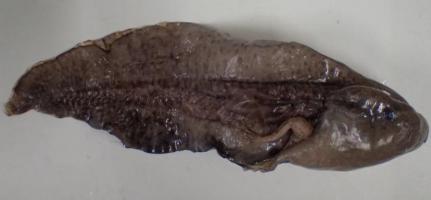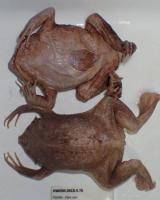Amphibians
Phylum: Chordata Class: Amphibia
The order Anura, meaning “without a tail”, consists of the frogs and toads. They have long, powerful hind legs which make them well adapted to jumping. Due to their permeable skin, they inhabit semi-aquatic or humid areas. Frogs are also known for their calls, which can be heard up to a mile away. The males use their calls to attract females during the mating season.
For more information on amphibians in general click here
Trinidad & Tobago Amphibians
In Trinidad and Tobago amphibians are only represented by the order Anura (frogs and toads). There are no naturally occurring Caudata (newts and salamanders) and only one dubious record of a Gymnophiona (caecilians). There are 35 species from 12 families currently recorded from these islands. Of these several are endemic and some have quite restricted distributions. The most commonly encountered anuran is the cane toad or crapaud often found in gardens and seen squashed on the roads. One of the rarest is the endangered Golden Tree Frog only found on the highest mountains in the Northern Range and in the Paria Peninsula of Venezuela.
For details about the amphibians found in Trinidad & Tobago click here
For profiles of selected species click here
UWIZM Collections
The collection houses over 400 specimens representing all 12 families found locally. They were collected over the last 80 years from all areas of Trinidad and Tobago. Most are preserved in alcohol or formalin although there are a few skeletal specimens as well. There are also a few specimens of newts and salamanders from North America, which are used in the teaching collection. There is one caecilian specimen from Dominica.
Families in the collections include:
Aromobatidae, Bufonidae, Centrolenidae, Craugastoridae, Eleutherodactylidae, Hemiphractidae, Hylidae, Leiuperidae, Leptodactylidae, Microhylidae, Pipidae, Ranidae
Highlights
Scarthyla vigilans specimens preserved in formalin
Live Golden Tree Frog (Phytotriades auratus)

Tadpole of the Paradoxial Frog (Pseudis paradoxa)

Suriname Toad (Pipa pipa) adults
| Back to The Collections |
Last updated 7 June 2018








